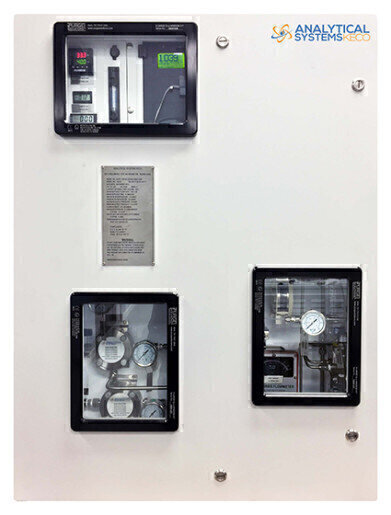Measurement and Testing
Inline H2S in crude oil analyser offers automated, accurate and safe measurement of off-spec crude oil for LACT and TACT systems
Jun 08 2020
The Model 205 H2S in crude oil analyser from Analytical Systems Keco offers a real-time, automated, highly accurate and safe method for monitoring H2S concentration in crude at LACT (Lease Automated Custody Transfer), TACT (Truck Automated Custody Transfer) systems and meter runs. Monitoring H2S in crude is critical to maintain personnel safety, avoid cross-contamination that effects product quality, ensure compliance with state and federal regulations, and control corrosion.
As many major midstream companies impose H2S limits, the inline H2S in crude oil analyser provides the information needed to reject crude oil that does not meet quality specifications. Now able to reject off-spec crude, midstream companies can focus on moving as much on-spec crude as possible to terminals in the U.S. Gulf to ship internationally. At the same time, companies accepting off-spec crude oil can use H2S scavenging chemical pumps controlled by the inline H2S in crude analysers to increase the efficiency of the scavenging process and avoid overtreatment.
The Model 205 H2S in crude oil analyser replaces manual grab sampling for lab analysis. This revolutionary inline analyzer is an automated technology that offers repeatability of 1% compared to 30% with manual grab methods. Instead of waiting days for lab results that are often inaccurate, operators get real-time, accurate and repeatable readings.
When serving as part of an automated process, the H2S crude oil analyser controls an automatic valve that shuts in or diverts the crude oil when H2S concentrations are above specified limits. Therefore, midstream companies avoid receiving crude oil that has higher concentrations of H2S. As hydrogen sulphide is corrosive to pipelines, tanks and other holding vessels, real-time and historical data can prompt companies to treat the H2S before capital-intensive measures are necessary.
The principle of operation of the inline H2S in crude oil analyser is based on continuous, free-flowing liquid sampling by a heated Sample Transfer Stripper (STS) unit that separates the liquids from the H2S gas sample. The STS is a very simple device - using 90% few parts than complicated “headspace” stripping column methods - that provides an ultra-clean and dry sample to the detector for analysis.
The H2S-free carrier air sweeps the sample to the detector for quantitative analysis in ppb, ppm, or percent levels. The detection technology is based on chemically-specific density changes and is the only detection method specific only to H2S.
Successfully implemented in hundreds of applications worldwide, the Model 205 H2S in crude oil analyser is gaining popularity with U.S. midstream companies who are installing them on both their low and high flow LACT and TACT systems to get automated and real-time H2S readings of hydrogen sulfide to ensure conformance to limits imposed on H2S.
Digital Edition
PIN 25.1 Feb/March
March 2024
In This Edition Safety - The technology behind the ION Science Tiger XT - Safety with ammonia and LOHCs as hydrogen carriers Analytical Instrumentation - Discussion on new tribology te...
View all digital editions
Events
Apr 24 2024 Mumbai, India
Apr 24 2024 Jakarta, Indonesia
Apr 28 2024 Montreal, Quebec, Canada
Apr 30 2024 Birmingham, UK
May 03 2024 Seoul, South Korea


















